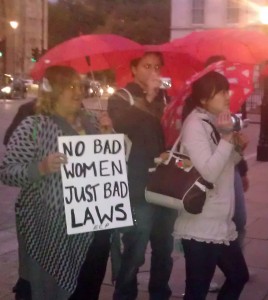A shorter version was published on Blogcritics
A foundation of the “academic method” in the Western world is contradiction, turning established knowledge and ways of things on its head, challenging established assumptions. It’s something that James C. Scott does in spades in The Art of Not Being Governed: An Anarchist History of Upland Southeast Asia.
At its heart is one region of the world, one of the last areas of the world to be brought into the nation-state system. “Zomia is a new name for virtually all the lands at altitudes above roughly three hundred meters all the way from the Central Highlands of Vietnam to northeastern India and traversing five Southeast Asian nations (Vietnam, Cambodia, Laos, Thailand, and Burma) and four provinces of China (Yunnan, Guizhou, Guangxi, and parts of Sichuan). It is an expanse of 2.5 million square kilometres containing about one hundred million minority peoples of truly bewildering ethnic and linguistic variety.” (p. ix)
And there’s huge amounts of fascinating detail there – from the role of the New World crops of maize and sweet potato in allowing what I was taught of at school as “traditional” slash and burn (what Scott calls swidden) agriculture, to the egalitarian politics of the Lisu, which on Scott’s account is strongly anti-authority and built around many stories of the felling of over-mighty, over-ambitious headmen.
But it’s the overarching frame of this book that really makes it a must-read for those who like finding new ways of looking at history and the shape of the modern world. Scott points out (unarguably) that the state is a very recent arrival on the human scene, and that most humans, through almost all of our history, have lived in far smaller, freer, often anarchic and flexible units.
We can’t now, however, know what they were like, for contrary to the view (established by people writing from within, and usually in support of the nation state) the usually independent, often anarchical groups in Zomia are not some historical hangover, “primitive” people who couldn’t manage for one reason or another to “modernise”, but groups who chose to avoid the restrictions of the state, the “discipline” of padi farming, and choose the freer (and almost invariably better nourished) life of the forest and hill. (Scott comprehensive rebuffs the traditional tale of Malaysia’s orang asli “original people” once thought to have been descendents of earlier waves of migration less technically developed than the Austronesian populations who followed. They are not genetically different, he says, but part of a “political series”. p. 183)
And they’re not tightknit “tribes”, but highly flexible groupings that can change identity for practical advantage almost at will, and absorb a huge range of disparate incomers, from runaway slaves, peasants and soldiers to adventurous traders and general malcontents.
It doesn’t quite deliver, but hints at an alternative world history in which the nation state, rather than its traditional portrayal as “civiliser”, “developer”, “stabiliser” is in fact a destroyer of rights, a deliverer of poor health and nutrition, a veritable Kali of woes. And one where the non-state societies are the defenders of functionality, freedom and hope.
read more



 About
About